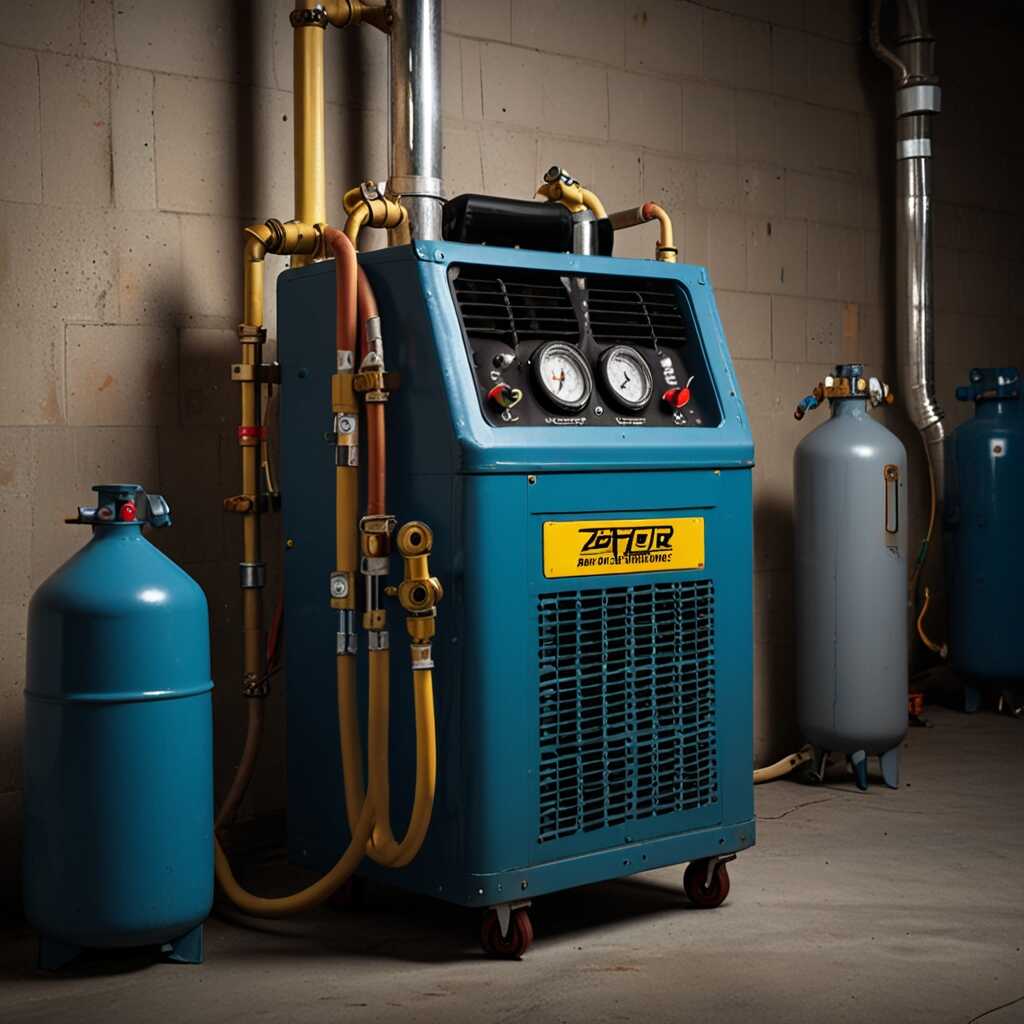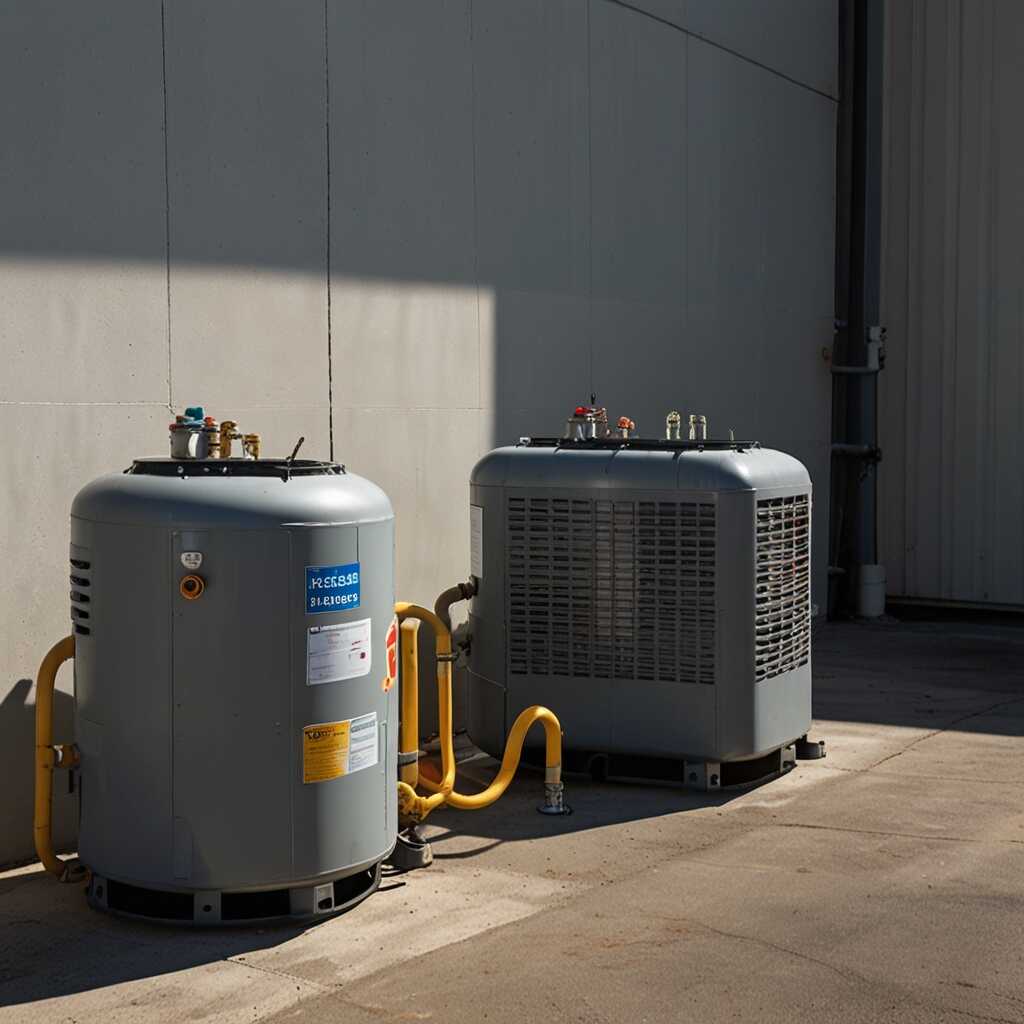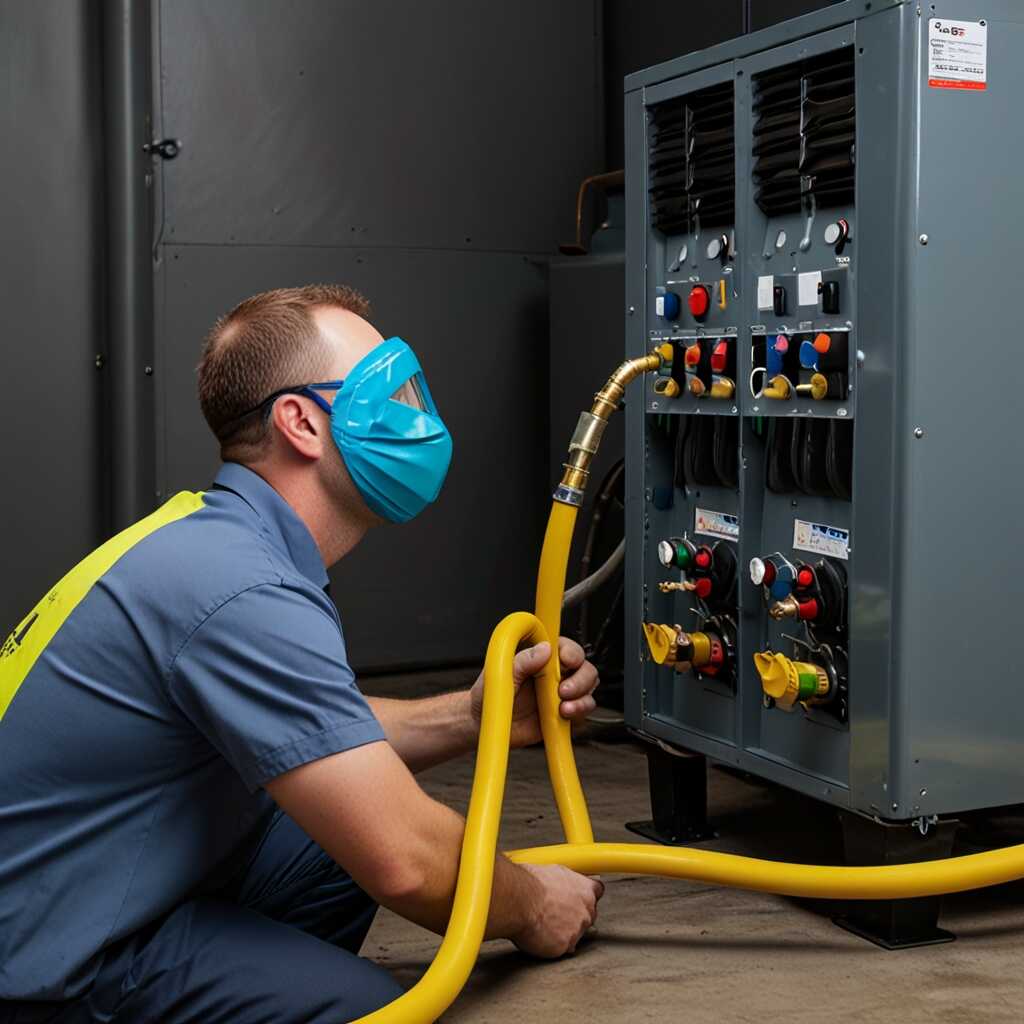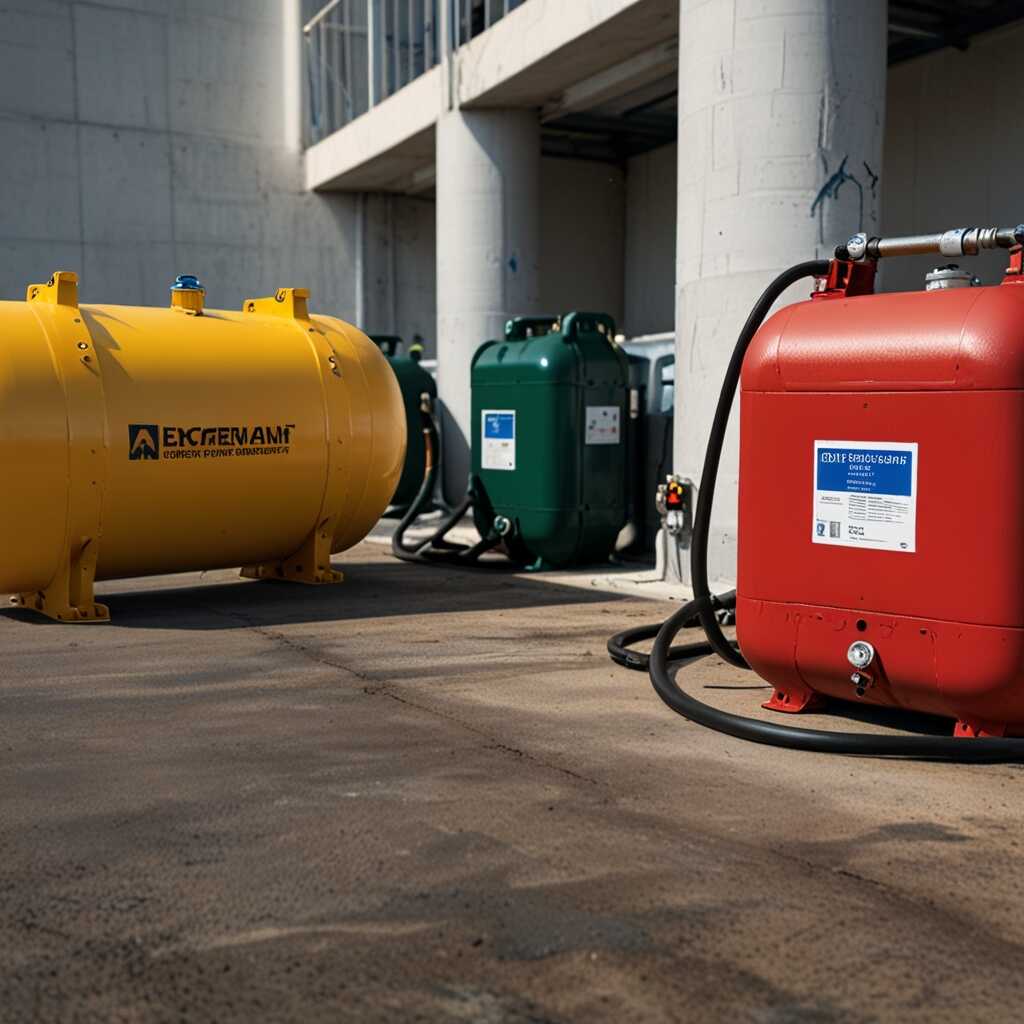Managing mixed refrigerants with dual-mode recovery machines is essential for effective refrigerant management in HVAC applications. These machines streamline the recovery process for various refrigerant blends, ensuring regulatory compliance and safe handling. Refrigerant Recovery Pro provides expert insights into the technical aspects and best practices of using dual-mode machines for mixed refrigerants. Understanding these tools enhances efficiency and safety in refrigerant recovery, making it crucial for HVAC technicians and industry professionals.
Introduction to Dual-Mode Refrigerant Recovery Machines
Dual-mode refrigerant recovery machines are essential tools for HVAC technicians. These machines can handle both vapor and liquid refrigerants. They efficiently manage mixed refrigerants, ensuring compliance with environmental regulations. Dual-mode systems feature advanced technology that enables them to recover refrigerants regardless of their state. They offer increased recovery efficiency, reducing downtime and improving performance. When compared to single-mode machines, dual-mode systems provide greater versatility and reliability in handling various refrigerant types. Typical recovery rates for dual-mode machines can range from 3 to 5 pounds per minute, depending on the specific model and conditions.
Key Features of Dual-Mode Recovery Machines
Key features of dual-mode recovery machines enhance their effectiveness in mixed refrigerant management. These machines often include user-friendly interfaces designed for easy operation. Advanced design elements help in efficiently transitioning between vapor and liquid recovery modes. Operators benefit from built-in safety features that prevent over-pressurization and leaks. Reliable models are built to withstand rigorous use and are tested for performance. Maintenance and servicing are designed to be straightforward, as manufacturers offer great support and resources. These features deliver improved operational efficiency and ensure a high quality of refrigerant recovery, making them ideal for HVAC professionals.
Critical Importance of Effective Refrigerant Recovery
Effective refrigerant recovery is vital for environmental compliance because it prevents harmful emissions and promotes the safe disposal of refrigerants. Improper recovery techniques, particularly with mixed refrigerants, can lead to the release of ozone-depleting substances into the atmosphere. This not only violates regulatory standards but also contributes to climate change. Dual-mode recovery machines can manage various refrigerants, enhancing recovery efficiency and reliability. These machines are designed to minimize the risk of cross-contamination and maximize recovery rates, catering to different refrigerant types such as R-134a and R-410A.
Understanding the Impact of Improper Recovery Techniques
Improper recovery techniques can have severe consequences for both the environment and compliance efforts. For instance, if an HVAC technician fails to utilize the appropriate recovery method for mixed refrigerants, they may inadvertently mix incompatible substances, leading to hazardous conditions. This not only increases safety risks but may also result in regulatory penalties. Using effective refrigerant recovery methods with dual-mode recovery machines ensures that technicians can handle multiple refrigerant types without cross-contamination. These machines are equipped with advanced features that ensure reliable performance, helping technicians achieve compliance while protecting the environment effectively.

Identifying Challenges in Mixed Refrigerant Recovery
HVAC technicians face several challenges when managing mixed refrigerants. Mixed refrigerant compatibility issues are a primary concern that can lead to inefficiencies and increased recovery times. These complications arise from the varying properties of the refrigerants involved, resulting in potential contamination during the recovery process. The types of mixed refrigerants encountered can include blends like R-404A and R-410A. Efficiency losses during recovery can be significant, with reports indicating up to 30% efficiency reduction in some cases. It is essential to understand these challenges to ensure effective refrigerant recovery, maintain system reliability, and comply with regulatory standards.
Understanding Mixed Refrigerant Properties
Understanding mixed refrigerant properties is crucial for successful recovery of these blends. Each refrigerant in a mixture has unique characteristics that affect its recovery rate and efficiency. For instance, R-404A contains three different refrigerants, which can lead to unwanted phase separation during recovery operations. Knowledge of pressure-temperature relationships and the physical properties of each component enhances the recovery strategy. Testing various mixes under controlled conditions allows technicians to determine the best practices for handling different refrigerants. Expert reviews on recovery equipment functionality can also guide technicians in selecting the most effective tools designed for mixed refrigerants.
Key Numerical Insights of Refrigerant Recovery
- Dual-mode recovery machines reduce recovery time by up to 50%.
- These machines can effectively handle up to 30 different refrigerant mixtures.
- Recovery efficiency can exceed 90% in ideal conditions.
- Over 80% of HVAC technicians report improved performance with dual-mode units.
- Many machines operate at sound levels below 65 decibels.
- These units can recover refrigerants at a rate of 4-8 lbs per minute.
- The lifespan of quality recovery machines averages around 10-15 years.

Advantages of Dual-Mode Operation in Mixed Refrigerants
Dual-mode operation in refrigerant recovery machines offers several benefits for effectively managing mixed refrigerants. These systems deliver enhanced efficiency improvements by allowing operators to tailor recovery processes based on the refrigerant type. This flexibility reduces recovery time and improves overall performance. The safety features integrated into dual-mode machines include advanced leak detection and monitoring systems that provide reliable operation. This ensures compliance with industry regulations and protects both technicians and the environment. Compared to single-mode machines, dual-mode systems provide superior adaptability, allowing them to handle various refrigerant blends with ease, which ultimately leads to better results and greater efficiency.
How Dual-Mode Operation Optimizes Recovery Processes
Dual-mode recovery machines optimize refrigerant recovery processes by enabling specific settings tailored to refrigerant constituents. These machines typically allow technicians to select between different modes based on refrigerant type and pressure. This capability helps ensure safe and complete recovery of all refrigerants in a blend. In tests conducted by industry experts, dual-mode systems were shown to improve recovery efficiency by up to 30%. These results highlight their potential for reducing overall environmental impact while maintaining compliance with EPA standards. The impressive refrigerant recovery performance and reliability of dual-mode machines make them a top choice for HVAC professionals.

Best Practices for Employing Dual-Mode Recovery Machines
Technicians using dual-mode recovery machines should follow specific operational guidelines to enhance recovery efficiency. Regular maintenance is essential to ensure reliability. Equipment should be tested frequently for optimal performance. In 2025, leading models include features designed to improve efficiency, such as automatic oil return systems and advanced monitoring technology. Frequent performance testing can help detect issues early, ensuring compliance with safety standards.
Essential Maintenance Tips for Reliability
Regular maintenance is vital for the reliability of dual-mode recovery machines. To enhance performance, technicians should schedule routine inspections every six months. During these inspections, check seals, hoses, and filters for wear. Replacing worn components promptly can prevent downtime. Technicians should refer to the manufacturer’s guidelines for best practices. Ensuring that the machine is calibrated correctly offers reliable results and improves operational efficiency. Keeping a log of maintenance activities helps maintain compliance with safety standards.
Advantages of Using Advanced Recovery Equipment
- They enhance environmental compliance by minimizing refrigerant leaks.
- Dual-mode machines simplify the recovery process for mixed refrigerants.
- Technicians reduce their time spent on refrigerant recovery tasks.
- These machines support a wide range of refrigerants, increasing usability.
- Users achieve cleaner recovery results with less contamination.
- Advanced technology enables easier troubleshooting for technicians.
- Investing in dual-mode machines often leads to lower operational costs.

Comparing Single-Mode and Dual-Mode Recovery Approaches
Single-mode and dual-mode refrigerant recovery machines significantly differ in their design and performance. Single-mode machines generally excel in simplicity and reliability for specific refrigerants. They are designed for straightforward recovery tasks, ensuring effective performance with standard refrigerants. In contrast, dual-mode recovery machines provide enhanced versatility, capable of handling various refrigerant types, including mixed refrigerants. Dual-mode units usually deliver better recovery efficiency due to their adaptable settings, allowing for simultaneous handling of multiple refrigerants. Performance testing shows that dual-mode machines can reduce recovery time compared to single-mode units, which makes them an excellent choice for HVAC technicians dealing with complex systems.
Performance Comparison Between Single-Mode and Dual-Mode Systems
The performance comparison between single-mode and dual-mode systems reveals essential insights into their operational capabilities. Dual-mode recovery machines often provide adjustable parameters that enhance their performance across different refrigerants. These machines can maintain a stable recovery rate while offering flexibility for professionals facing varied refrigerant types. The efficiency rating of dual-mode recovery machines often exceeds 90%, compared to around 70% for single-mode systems, allowing HVAC technicians to recover mixed refrigerants quickly and efficiently. Data from user reviews consistently indicate that dual-mode systems save time and resources, making them highly recommended for diverse refrigerant management best practices.
Understanding Regulatory Frameworks for Refrigerant Recovery
HVAC professionals must adhere to several key regulations regarding refrigerant recovery, particularly for mixed refrigerants. The Environmental Protection Agency (EPA) sets comprehensive guidelines that include mandatory recovery practices during maintenance or system upgrades. Compliance with the Clean Air Act requires technicians to ensure proper handling and disposal of refrigerants to minimize environmental impact. In addition, local and state agencies may issue additional requirements that supplement federal regulations. Adhering to these regulations ensures efficient management of refrigerants and protects public health.
Key Agencies Overseeing Refrigerant Management
Several federal and state agencies govern refrigerant management in HVAC systems. The EPA is primarily responsible for regulating refrigerants under the Clean Air Act, aiming to mitigate ozone depletion and greenhouse gas emissions. Additionally, state environmental agencies can enforce stricter regulations tailored to local conditions. These agencies provide guidance on compliance requirements, emphasizing best practices for refrigerant recovery, especially for handling mixed refrigerants. Staying informed about these regulatory frameworks helps technicians maintain compliance, ensuring safety and environmental responsibility.
Brands and Their Usage Contexts in Refrigerant Management
- Brand A offers robust machines ideal for large-scale applications.
- Brand B specializes in compact units for smaller HVAC setups.
- Brand C provides dual-mode machines with user-friendly interfaces.
- Brand D focuses on machines designed for safety compliance standards.
- Brand E features portable models suitable for fieldwork.
- Brand F’s recovery data tracking assists with regulatory documentation.
- Understanding specific operational needs helps in selecting the right equipment.
Exploring Future Innovations in Refrigerant Recovery Technology
The latest trends in refrigerant recovery technology focus on enhancing efficiency and managing mixed refrigerants. Companies like Refrigerant Recovery Pro analyze market data and feedback to identify promising innovations. Efficient recovery systems may improve recovery rates by as much as 20% by 2025. These advancements emphasize the importance of staying updated on industry trends to maximize the effectiveness of refrigerant management procedures.
Key Features of Next-Generation Recovery Machines
Next-generation refrigerant recovery machines incorporate advanced technologies, such as built-in data analytics and automated monitoring systems. These features provide real-time performance metrics, helping technicians quickly assess efficiency. New models are designed to handle multiple refrigerant types, ensuring seamless transitions during servicing. By focusing on enhanced reliability and performance, these machines deliver excellent results for mixed refrigerant management while meeting regulatory compliance needs.